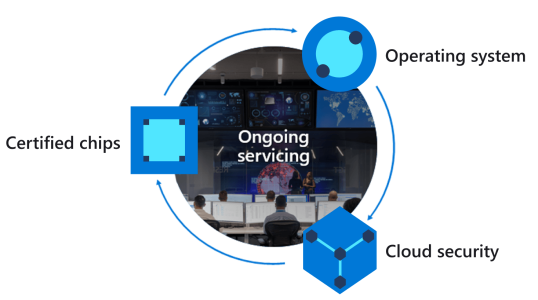Azure Sphere
In the traditional approach to IoT microcontroller development, you're responsible for integrating and maintaining all the bits of a solution.
This approach includes:
- The communications stack.
- Security.
- Authentication.
- Certificates.
- Identity.
- Encryption libraries.
- Update processes.
- Your solution.
You're a solution domain expert. But you're now also responsible for tracking new and emerging security threats, mitigating them, and updating the platform to protect IoT devices.
Azure Sphere is a unique, highly secure IoT platform. It allows you to focus on your solution.
Azure Sphere manages:
- Security.
- Identity.
- Certificates.
- Reporting.
- Tracking emerging attack vectors.
- Mitigating threats.
- Updating the platform.
- Distributing applications to help protect your solutions, customers, and reputations.
Azure Sphere consists of these components:
- Azure Sphere certified chips from hardware partners include built-in Microsoft security technology to provide connectivity and a dependable hardware root of trust.
- Azure Sphere OS adds layers of protection and ongoing security updates to create a trustworthy platform for new IoT experiences.
- Azure Sphere Security Service brokers trust for device-to-cloud communication, detects threats, and renews device security.
Together these components implement The Seven Properties of Highly Secure Devices.

Azure Sphere architecture
The Azure Sphere microcontroller unit (MCU) has three developer-accessible cores: a Cortex-A7 that runs a Linux kernel and two Cortex-M4 cores that can run bare-metal code or an operating system like the Azure real-time operating system or FreeRTOS.

High-level applications that run on the Cortex-A7 Linux kernel are used for less timing-sensitive tasks, like:
- Establishing network connections.
- Negotiating security.
- Updating device state.
- Communicating with real-time core applications.
- Sending telemetry messages to cloud gateways like Azure IoT Hub.